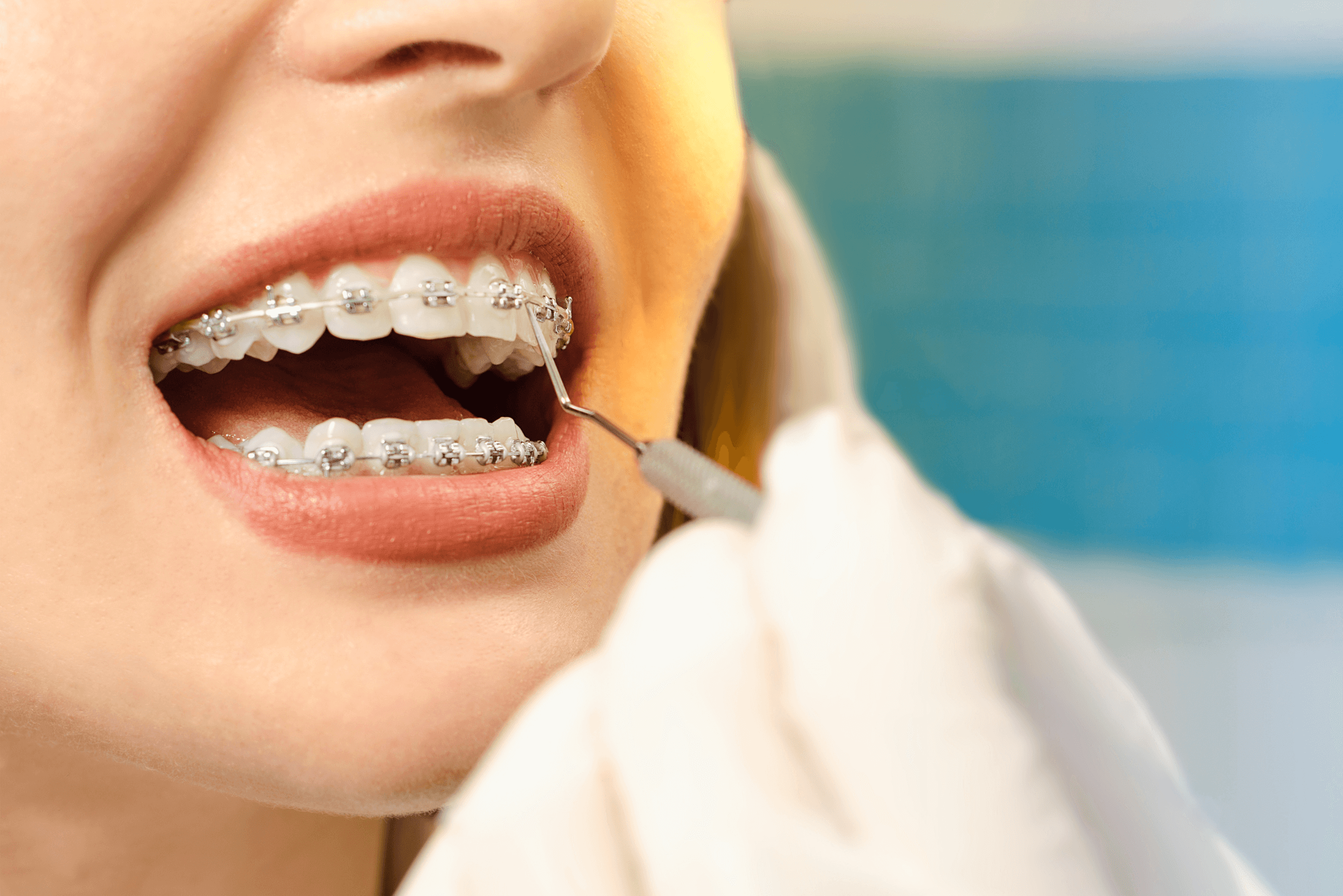Everyone wants a beautiful, straighter smile that helps gain confidence and symbolizes one’s self-esteem. However, some may feel embarrassed due to their imperfect teeth. To eradicate such issues, metal braces can be used to position teeth perfectly to achieve an appealing smile. There are other treatments too, such as clear aligners, but metal braces are more effective for a person with too much crookedness in the teeth. They help in aligning and straightening teeth over a period.

Questions To Ask An Orthodontist About Braces
Before getting orthodontic braces, patients usually ask some questions we are trying to answer here for your better understanding and knowledge.
1. What Causes Crooked Teeth and How to Straighten Them?
Crooked or misaligned teeth are caused due to several reasons, and the most common is genetics. Some issues, such as crowding, jaw size and shape, hyperdontia (having too many teeth), overbite and underbite, and palate development, can be passed from generation to generation. Other issues can be poor oral hygiene, leading to gum diseases, early tooth loss, thumb sucking in childhood, tongue thrusting, malnutrition, mouth breathing, and trauma.
Our bones have two kinds of cells, osteoclast, and osteoblast, which helps the realignment of the teeth during these four treatment types done by orthodontists:-
- Braces – Metal or ceramic braces are used for the realignment of teeth. These are permanent until the treatment gets over.
- Clear Aligners – Invisible or clear aligners are removable and act as an alternative to braces.
- Retainer – This is mostly used after the treatment of braces to retain the position of the teeth and can also be used if there is some crookedness among teeth.
- Palatal Expander – It is invisible and is used to widen the upper jaw space in children so that the proper position will be there when their teeth grow.
2. What Are the Three Classes of Orthodontic Treatment?
Each orthodontic issue is classified based on the jaw’s alignment and the teeth’ position. Each class is treated in a different manner or with a different approach. There are three classes in orthodontic treatment: class I, class 2, and class 3.
- In Class I, the alignment of the upper and lower jaw is normal, and the bite is balanced, but the main issues are crowding, rotations, spacing problem, and crooked teeth.
- In Class II, the upper jaw and teeth lie more forward than the lower jaw and teeth. This is also known as an overbite and may result in increased chances of trauma to the front teeth, fatigue while chewing, tooth grinding, headaches, and jaw soreness.
- In Class III, the lower jaw and teeth lie more forward than the upper jaw and teeth. This is also known as underbite and may result in eating and chewing difficulties, headaches, tooth decay, chronic mouth breathing, sleep apnea, and halitosis.
3. How Long Does Orthodontics Treatment Take?
It depends on the class of orthodontic treatment the specialist advises you. It may vary from person to person based on the teeth’ alignment. Some cases may take a few months, while others may take between 12 and 36 months. Before starting your treatment, your orthodontist will scan your teeth condition and report the current shape, placement, and structure of your teeth and jaw. Accordingly, your treatment will take place for a particular duration.
4. What Happens After an Orthodontic Surgery?
Orthodontic surgery is done to correct the shape and structure of the jaw. After having surgery, you may experience some discomfort in your face and jaw. Swelling and stiffness may also appear; some people may also report numbness in their lips.
These symptoms go away automatically with time, proper rest, and following the medications.
5. Can Braces Damage Roots?
As everything comes with some complications, it may cause a minimal amount of root resorption in some people. However, risks due to root resorption are few and far between, as getting braces slightly loosens the hard and soft dental tissues of roots. Though not everyone has its side effects, and if has, then those are minimal, you can go with getting braces on to perfect your smile and dental health.
6. Why Is Oral Health Important With Braces?
Oral health is essential for every individual, whether you have braces or not. However, you need to be extra careful about your oral hygiene with braces. While eating with braces on, food may get stuck inside some areas of braces, which results in plaque, a harmful layer of bacteria that may get formed on the teeth. Cavities can be caused by plaque, so proper care should be taken to maintain oral health by brushing your teeth twice a day.
Wrapping Up: Mint Dental
If you want a beautiful smile or to fix the gaps between your teeth, you can trust Mint Dental for your orthodontic treatment. We provide you with the best possible treatment with ease. Our equipment is well-tested, and we have a team of well-experienced professionals. Our team performs various orthodontic treatments under the guidance of Dr.Atul Singh, the best dental doctor in Lucknow. You can get metal or ceramic braces with us according to your needs. Our ultimate goal is to provide you with the best dental care using the latest technologies and meet your satisfaction!



